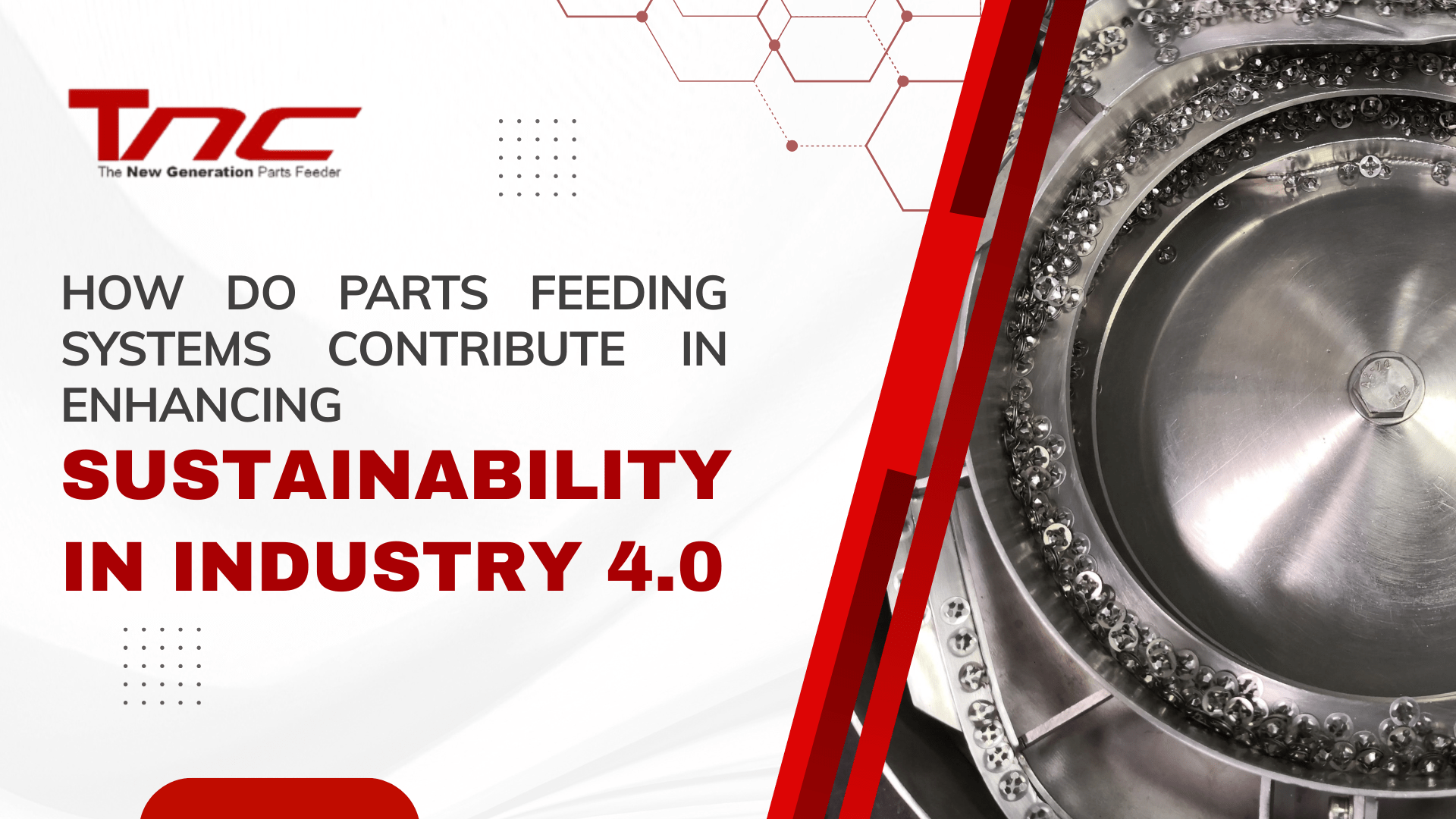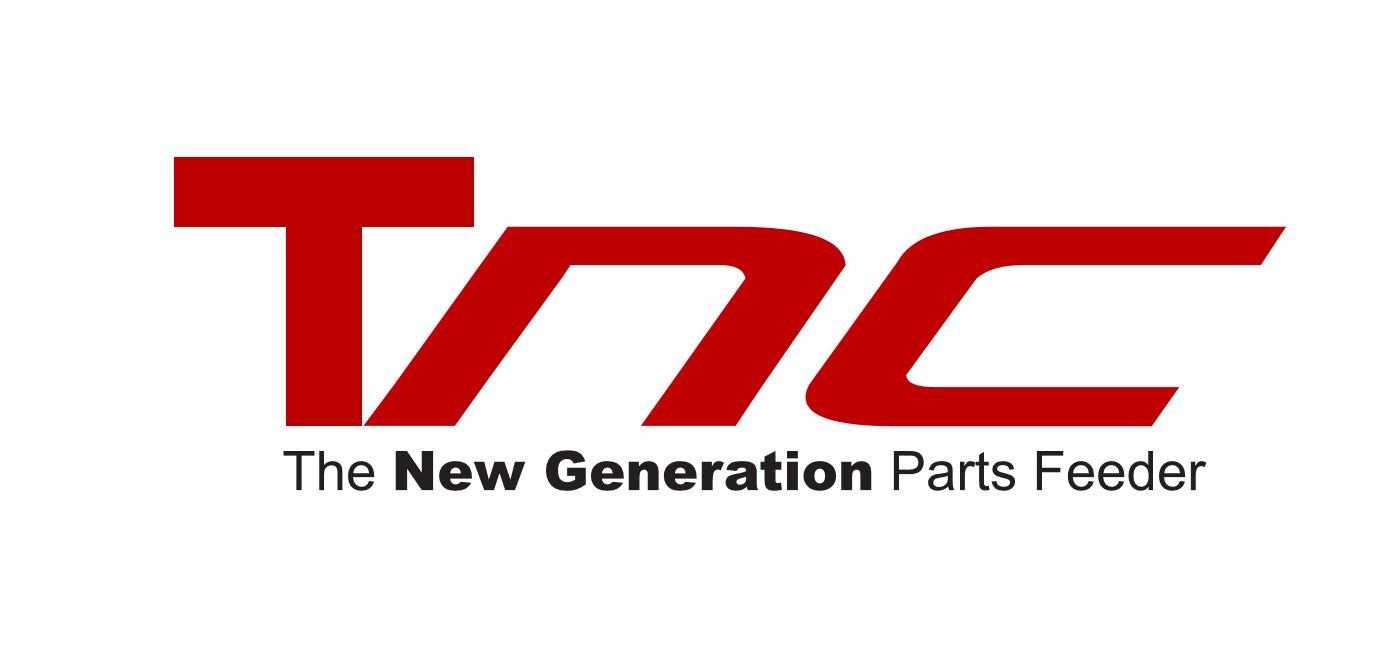
19 พ.ค. How do parts feeding systems contribute in enhancing sustainability in Industry 4.0
Industry 4.0 can be defined as an industrial revolution focused on information technology such as Industrial Internet of Things (IoT), Artificial Intelligence (AI), Big Data, and Robotics. Parts feeding systems are often considered as one of technologies that are associated with Industry 4.0, which plays an important role in Smart Manufacturing around the world, including Malaysia.
Key factors of parts feeding systems adapt to Smart Manufacturing
Mechanical track design and blowing system
- Mechanical track design is able to adjust different parts of position and orientation based on the parts sizes and shapes, make it able to accurately convey every different parts and achieve efficient parts orientation.
- Blowing system in charge of part rejection when the orientation is not matched with the customer required position to ensure the entire track only the correctly oriented parts are left.
Auto-tuning, smart sensor and data analytics
- Auto-tuning and smart sensing systems in parts feeding systems can monitor and provide data feedback on operation such as vibration frequency, speed, intensity, and parts status to achieve automatic sorting, categorizing and precise feeding, as well as quality checking.
- Incorporate with AI calculations to analyze the condition of the equipment, predict failures and optimize performance, avoiding unnecessary downtime and always operating in optimization.
Flexible and modular design
- The modular design and versatile components of the vibrating bowl feeders enable the flexible adaptation of parts of various sizes, shapes and weights to improve equipment utilization.
- Modular design can also enhance equipment flexibility, quick upgrades during production, such as updating sensors, software, control systems to accommodate more complex production requirements.
Remote controlling and monitoring
- Mechanical vibrating bowl feeders can be integrated with a remote control system that allows remotely monitoring the status of the equipment, adjusting settings from a mobile device or computer to reduce manual intervention.
- Remote control enables employees to avoid potential safety risks by not having direct contact with high pressure or hazardous materials,enabling real-time adjustments to equipment status.
How parts feeding systems foster to sustainability
Efficient energy utilization
Adopting high-efficiency power motors and advanced control systems, it can control the vibration speed and frequency more accurately, and automatically reduce energy consumption and enter into standby mode when high speed operation is not required to minimize the waste of energy.
Extended life cycle of equipment
Modular design allows components to be replaced or upgraded separately without the need to change the whole unit, which not only saves resources but also reduces maintenance costs. Eco-friendly and surface technology, using recyclable materials can avoid the materials difficult to degrade.
Low emissions and pollution reduction in manufacturing process
System optimization reduces the use of chemicals and lubricants used in traditional feeding systems, reducing the emission of hazardous waste and pollution. While material-saving fabrication processes such as lightweight and modular design allows vibratory bowl feeders made in a more eco-friendly manner.
Support green manufacturing and environmental issues
Low-noise and low vibration design of vibrating bowl feeders reduces both worker and environmental impact, meets industry noise pollution regulation standards, drives green certification of factories. Also, green manufacturing enables older bowl feeders to be made into new products by recycling the metals and materials used.
Future potential for sustainable growth of parts feeding systems
Efficient electric drive systems
- Adoption of more energy-saving and efficient electric drive systems such as new brushless motors like Rotary Feeder, which significantly improves the energy utilization of vibrating bowl feeders.
- More advanced intelligent control system will be integrated with Internet of Things (IoT) technology, making the vibratory bowl feeders able to monitor real-time performance data for dynamic optimization.
Intelligent & automation enhancement
- Vibratory bowl feeders will be more intelligently integrated with advanced sensors, machine acquisition and predictive maintenance technologies that can monitor equipment status in real-time,predict potential failures and self-adjustment.
- Flexible production scheduling and intelligent control enable the vibratory bowl feeders to adapt to small batches and customization needs, thereby improving resource utilization.
Green production with low environmental footprint
- Future adoption of more eco-friendly and harmless lubrication materials and closed-loop cooling systems to minimize the pollution and waste resources.
- New vibration damping technologies and noise-control designs will help the vibratory bowl feeders to be more silent in operation.
Sustainable and recyclable material selection
- Increased usage of recyclable metals, plastics and earth-friendly coatings, such as high-strength aluminium alloys, recyclable steel to reduce the usage of non-recyclable materials to promote cycle economy of feeders.
- More detachability of parts ensures that each part of the equipment can be easily recycled and reused, reducing the production of wastes such as motors, vibration systems, and control modules.
ข้อสรุป
In the era of growing environmental consciousness, each business is successively pursuing more and more sustainable operations in order to diminish the harmful effects on the earth, but at the same time, products that can generate profits. Hope this blog has brought you invaluable new knowledge! If you are interested, please feel free to contact us to get more details!



 TH
TH 